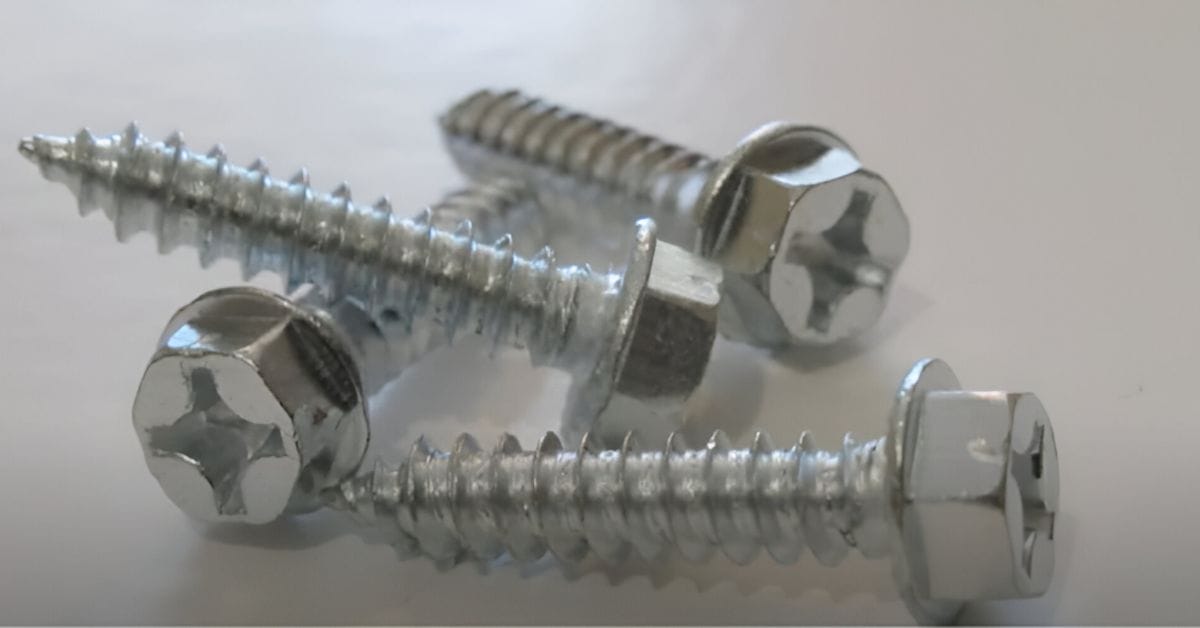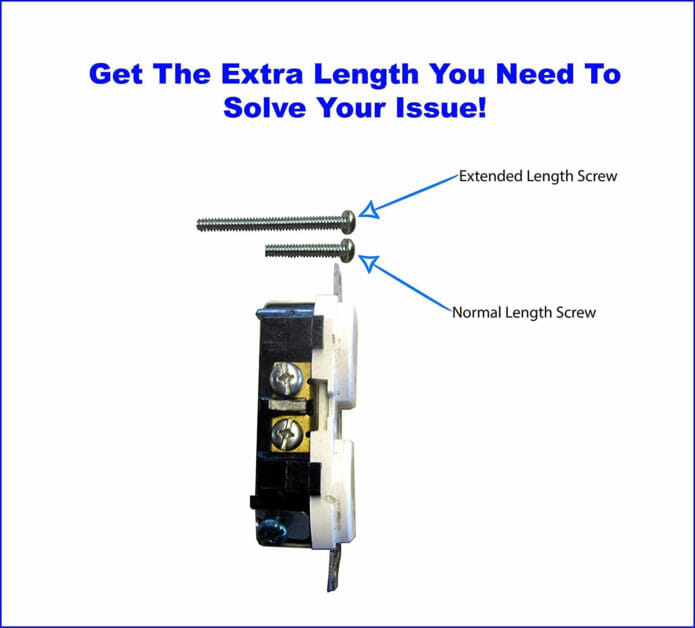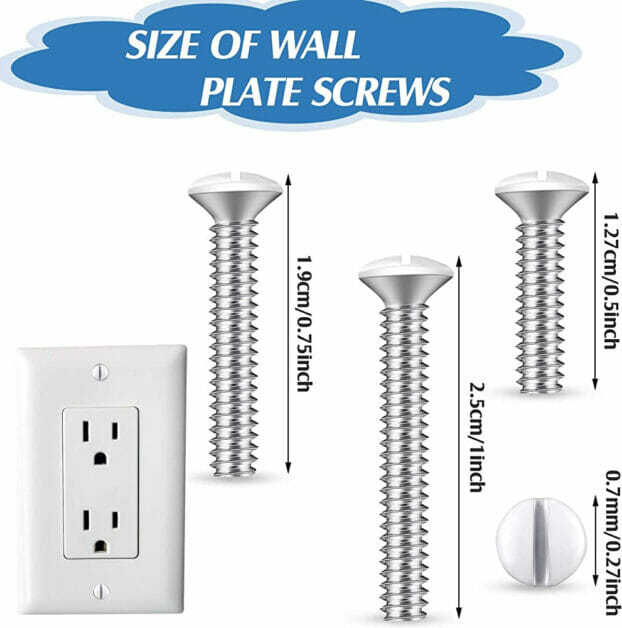What Size are Electrical Outlet Screws?

Are you wondering what size and type of screws are used in electrical outlets?
Outlet screws are used to fasten the outlets to their boxes. The type of screw used in an outlet is significant because its look and strength depend on it.
The length of screws used in electrical outlets is typically between 1” and 1½”, although they can be longer, up to 2”.
Lengths of Electrical Outlet Screws
An extended-length screw, as the name suggests, is longer than a normal-length screw.

Most outlets are packaged with around 1” screws.
An extended screw is typically around 1½” (one and a half inches) long or up to 2” at most. This is usually sufficient to allow a recessed outlet to be fixed to a wall, whether double-thick drywall or tile.
Why We Need Long Screws
The screws to secure an electrical outlet are typically long because the boxes must be attached firmly to a wall or paneling.
The extra length thus ensures that the outlets are fixed tightly, securely, and last long. The long screws penetrate deep into the wall by design.
They are also capable of resisting stripping and loosening. These features make them especially suitable for outlets that are used very frequently or placed in high-traffic areas.
Factors that Affect Screw Size
You will see different-sized screws in outlets, depending on certain features.
It’s not just about the length. The following factors determine screw size:
- Length – I discussed screw length above.
- Screw gauge (diameter) – The standard screw gauge for outlets (boxes and switches) is #6.
- Threads per inch – The standard thread count on electrical screws is 32, meaning 32 threads per inch of shaft.
- Cover plates are typically 5/16” long screws, but blank or solid cover plates may be packaged with 1” long screws.

Types of Screws Used for Outlets
First, let’s look at the NEC code.
The NEC Electrical Code
Specifications related to outlets and other similar electrical items are covered in NEC Article 314.
As far as screw sizes are concerned, the specifications are:
| Item | Number |
| Device boxes and faceplates | 6-32 |
| Outlet boxes | 8-32 |
| Ceiling fan boxes | 10-32 |
| Two sets of holes | 8-32 |
The first numbers (x in x-y) in the table above refer to the screw diameters. The larger the number, the larger the diameter. The second number (y in x-y) refers to the number of threads per inch, called the thread’s “pitch.”
There are two types of pitch defined for screws: course and fine.
- A 32-course pitch has a diameter of 0.138, equivalent to UTS Number 6, or a diameter of 0.164 (UTS Number 8).
- A 32-fine pitch has a diameter of 0.19, equivalent to UTS Number 10.
The importance of the screw is also highlighted in NEC 300.11 and 314.23. They require that the boxes be “securely mounted and fastened in place” [Mullin & Simmons, 2014].
Screw Types
The screws used for outlets are typically flathead machine screws that are either single-slotted or cross-slotted.
Depending on the slot type, they are driven in or taken out using a flathead or Phillips screwdriver. Some have truss heads, making them wider than regular round and pan head screws.
However, outlet cover or faceplate screws are often oval-shaped rather than round. They are similar to flathead screws but with slightly rounded heads. Other types used on outlets are pan-head, combination, and tamper-proof screws.
On some outlets, you may also see self-tapping screws, which create their hole once driven in. They allow you to attach an outlet without drilling a hole first.
Here is a complete list of common screw types used for outlets:
- Slotted flathead screws
- Slotted round-head screws
- Round slotted head screws (used in dryer outlet covers)
- Pan-head Phillips slotted screws (self-tapping)
- Flathead Phillips screws
- Plastic slotted screws
- Spanner head screws (tamper-proof)
- Rosett head screws
FAQs
What can I use to clean the threaded holes of a screw filled with paint (or some other contaminant)?
You can use a multitap tool to clean it out.
References
Website Resources:
- Amazon. https://www.amazon.com/
Books:
- Ray C. Mullin, Phil Simmons. Electrical Wiring Residential. Cengage Learning, 2014. https://www.abebooks.com/Electrical-Wiring-Residential-Mullin-Ray-Simmons/31002105443/bd
